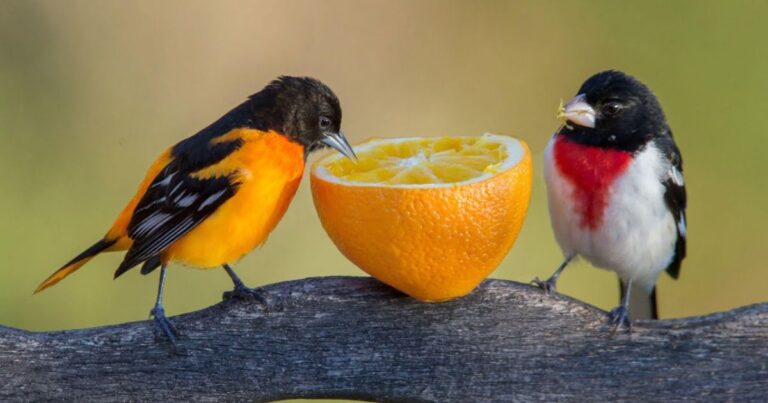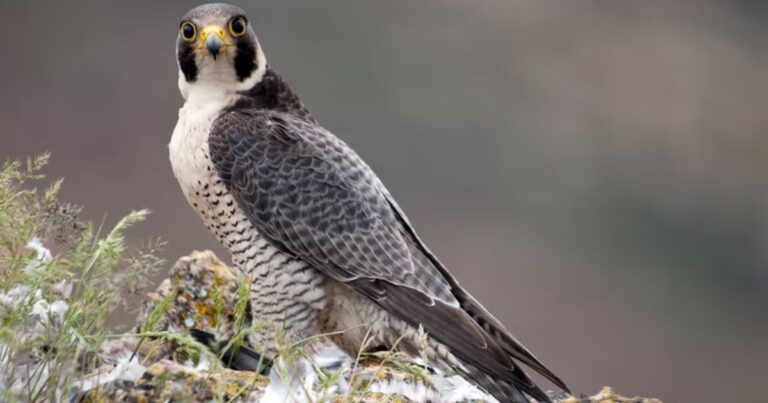Male vs Female Northern Flicker
The northern flicker, a striking woodpecker known for its distinctive markings and unique behavior, exhibits fascinating differences between its male and female counterparts. Understanding these differences not only enriches our appreciation for avian diversity but also sheds light on the complexities of sexual dimorphism in birds.
In this article, we will delve into the physical and behavioral traits that set male and female northern flickers apart, offering insights that can enhance your birdwatching experience and knowledge of these remarkable creatures.
Male vs Female Northern Flicker – Key Differences
When observing northern flicker male vs female in the wild, one of the most striking differences between males and females lies in their plumage. Male Northern Flickers sport a distinctive black “mustache” or malar stripe, which adds a touch of boldness to their appearance.
Females lack this defining feature, showcasing a more subdued yet equally elegant look. This visual dichotomy not only aids birdwatchers in identifying the sexes but also plays a role in mating displays, where males flaunt their markings to attract potential partners.
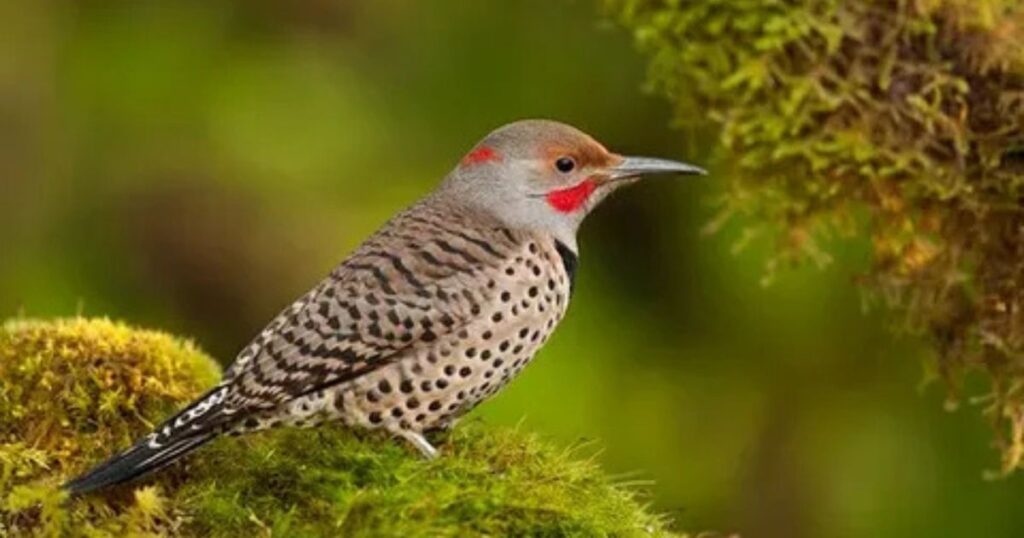
Beyond their physical traits, behavioral nuances further distinguish male from female flickers. Males are often more vocal, engaging in a repertoire of calls and drumming that serve to establish territory and attract mates. Their drumming can resonate through the forest, echoing a powerful presence. Females, while capable of similar vocalizations, tend to be more reserved and selective in their interactions.
This dynamic reflects the broader themes of courtship and competition within the avian world, where visual cues and vocal prowess combine to create a captivating tableau of courtship rituals. Observing these differences not only enriches our understanding of Northern Flickers but also invites us to appreciate the intricate dance of nature’s design.
Color Patterns on the Face and Neck
The northern flicker, a striking woodpecker species, showcases a fascinating divergence in color patterns between males and females that reflects not only their sexual dimorphism but also their ecological roles.
Males are adorned with a prominent black mustache stripe and a vibrant red nape, creating a bold visual statement that is essential for attracting mates and establishing territory. This vivid coloration serves as a beacon in their woodland habitats, where males often engage in elaborate courtship displays, drumming on trees to announce their presence.
Female northern flickers exhibit a subtler palette, featuring a more muted facial pattern devoid of the pronounced mustache and showcasing a soft brownish hue across their necks. This understated beauty plays a vital role in their survival; the less conspicuous coloration allows them to blend into the forest environment while they nurture their young.
This difference may also influence social dynamics within their species, as the males’ flamboyant markings can incite competition, while females often embody resilience and adaptability—qualities that are equally crucial for the success of their offspring. The contrasting color patterns of these birds serve as a reminder of nature’s intricate balance between attraction and practicality.
Red or Black Mustache Markings
In the world of northern flickers, the striking contrast between red and black mustache markings serves as a fascinating visual cue that goes beyond mere aesthetics. Male flickers proudly display bold red mustaches, which not only enhance their striking appearance but also play a crucial role in attracting mates.
This vibrant coloration signals health and vitality, traits that are highly sought after in the avian dating scene. Female flickers sport a more subdued black mustache, reflecting their role in nurturing rather than competing for attention. This distinction highlights an intriguing aspect of sexual dimorphism, where visual traits evolve differently based on gender-specific roles within the species.
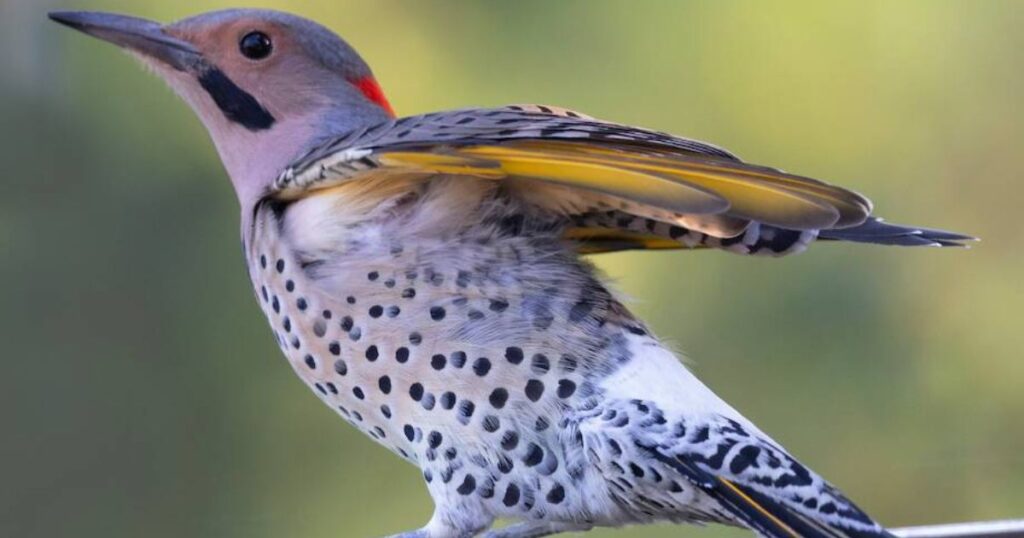
These markings can also serve as indicators of the birds’ behavior and social dynamics. Males with vivid red mustaches are often more aggressive, using their eye-catching features to establish dominance over territory and attract potential partners. Females with black mustaches may engage in more subtle forms of communication, relying on their intelligence and adaptability to navigate social interactions.
As such, the color of a northern flicker’s mustache is not just a matter of personal flair; it encapsulates the broader themes of survival, reproductive strategies, and social hierarchy within this captivating species. Understanding these nuances invites us to appreciate the complexity of avian life and the evolutionary paths that shape it.
How to Identify a Male Northern Flicker
To identify a male Northern Flicker, focus on its distinctive markings and behavior. One of the most striking features is the male’s vibrant red mustache stripe, which contrasts beautifully with its tawny-brown body and spotted breast.
This bold facial marking not only serves as a visual cue for identification but also plays a role in courtship displays, where males often engage in flamboyant drumming to attract mates. Observing this behavior during the spring breeding season can provide an exhilarating glimpse into their social dynamics.
Listen for the flicker’s unique call, a melodic series of notes that can echo through wooded areas. Unlike other woodpeckers, Northern Flickers have a more terrestrial lifestyle, often foraging on the ground for ants and beetles, making them a bit easier to spot.
When watching them in flight, take note of the distinctive white rump patch that flashes as they soar away—another identifying feature that sets them apart from their peers. By combining these visual and auditory cues, birdwatchers can enhance their appreciation for the male Northern Flicker’s unique charm and role within its ecosystem.
Behavior and Visual Cues
Male and female northern flickers exhibit distinct behavioral patterns that reveal their roles in mating and territory establishment. Males are often more conspicuous, utilizing their vibrant plumage and raucous calls to assert dominance and attract potential mates.
During courtship displays, males perform elaborate aerial displays, showcasing their striking coloration as they flutter and swoop through the air, making them the stars of the forest stage. This visual spectacle is not just for show; it serves as a demonstration of fitness, signaling to females that the male possesses the vitality and vigor necessary to defend a territory.
Female flickers tend to display more subtle behaviors, often opting for quieter, less flamboyant interactions. They may engage in foraging alongside males but will usually take a more reserved approach during courtship, assessing the male’s displays from a distance before making their choice.
Females also use visual cues differently; while they appreciate the bright markings of males, they are equally attuned to the health of their environment, often choosing nesting sites based on the availability of food resources and safety from predators.
This nuanced interplay between male flamboyance and female selectivity highlights the complex dynamics of attraction in northern flickers, reminding us that beauty in nature is not merely about appearance but is deeply intertwined with survival strategies.
How to Recognize a Female Northern Flicker
When attempting to recognize a female Northern Flicker, one of the most striking features to note is her subtle yet captivating plumage. Unlike their male counterparts, who flaunt a bold black mustache, females sport a more muted appearance with a gentle brownish hue. Their underbellies are speckled with delicate spots, which can often blend into the background of their forested habitats, making them elusive to the untrained eye.
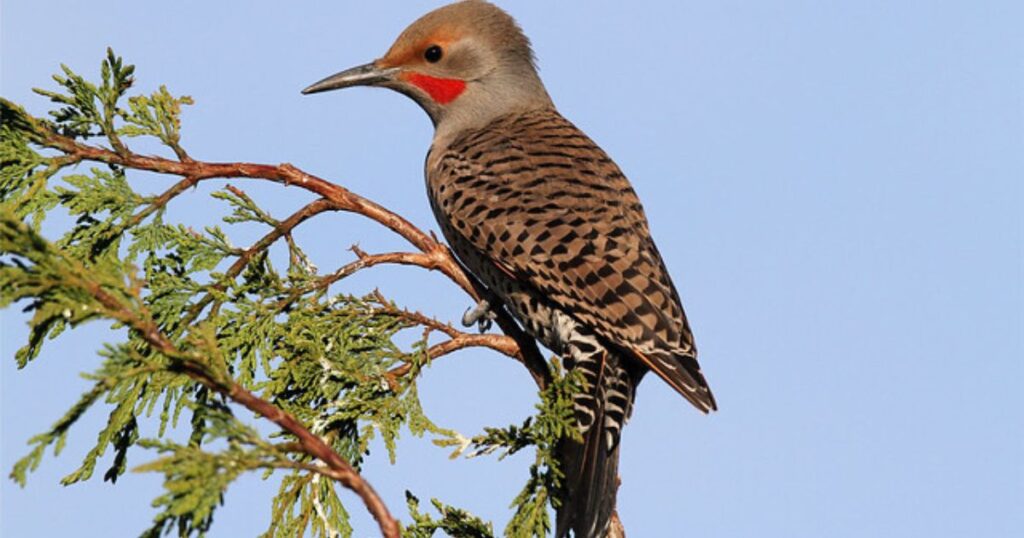
Observing them on the ground, where they often forage for ants and beetles, reveals the flicker’s distinctive behavior; they exhibit a graceful hopping motion that sets them apart from other woodpeckers.
Another key indicator of a female Northern Flicker lies in her vocalizations. While both sexes are known for their distinctive calls, females tend to emit softer, more melodic sounds, which can be a pleasure to hear during quiet mornings. Pay attention to their interactions with males, as courtship displays often highlight the differences in behavior.
Females may engage in a subtle bowing motion or perform a gentle head bobbing, showcasing their unique personality in the avian world. By focusing on these nuances, birdwatchers can deepen their appreciation for this remarkable species and foster a greater connection with the natural environment around them.
Subtle Color Differences
The northern flicker, a striking woodpecker found across North America, exhibits subtle yet intriguing color differences between males and females that can easily go unnoticed at first glance. Males typically flaunt a richer, more vibrant plumage, particularly evident in their black crescent markings on the breast and the distinctive black mustache stripe adorning their faces.
Females present a slightly softer palette; their markings are often less pronounced, lending them an air of understated elegance. This visual distinction not only aids in species identification but also reflects the intricate dynamics of courtship and territorial behavior.
Observing these color differences can offer deeper insights into the flickers’ social interactions. Males, with their bold coloration, may use their vibrant plumage to attract mates and assert dominance during breeding season. Females, on the other hand, might benefit from their subtler hues as they navigate the complexities of nest selection and chick rearing without drawing unnecessary attention from predators.
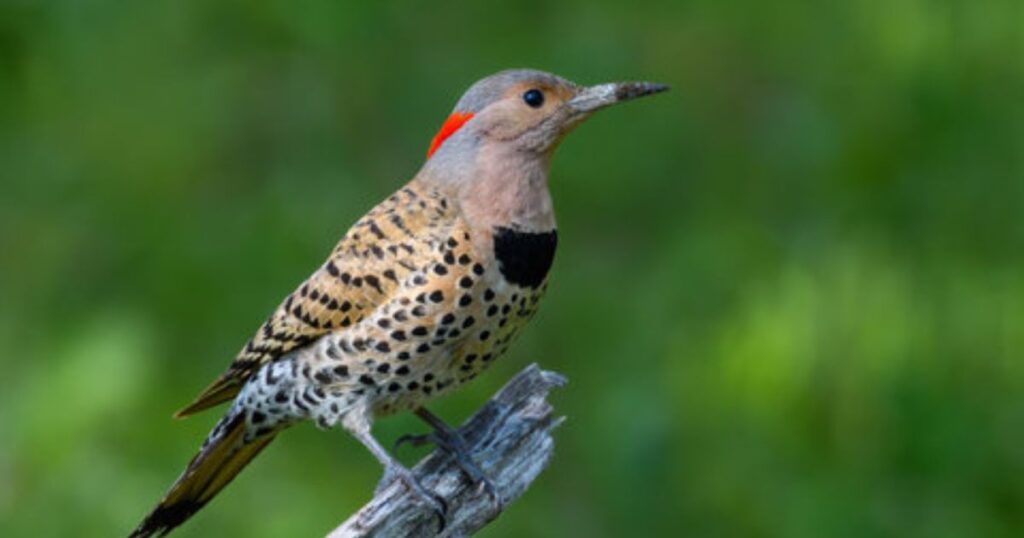
This delicate interplay of colors serves as a reminder that nature often employs nuanced strategies for survival and reproduction, where even the slightest shade can have profound implications. Thus, appreciating the northern flicker’s subtle sexual dimorphism invites us to consider how such variations influence not just individual birds, but the ecological relationships within their habitats.
Read More: “Are birds mammals? Here are the distinct features that classify the feathered animals.”
Final Thoughts
The male and female Northern Flicker exhibit distinct differences that go beyond mere physical appearance. Males typically showcase a vibrant black mustache and a more pronounced coloration, while females possess subtler features that are equally captivating.
Their behaviors during mating season also highlight the unique roles each gender plays within their species. By understanding these differences, bird enthusiasts can gain a deeper appreciation for the complexities of avian life. So next time you spot a Northern Flicker, take a moment to observe and appreciate the nuances that make each gender special.
FAQ’S
How to tell the difference between male and female northern flicker?
One of the most noticeable differences is the color of the mustache or malar stripe. Males typically have a black mustache, while females possess a more subdued, brownish stripe.
What are the markings of a female flicker?
Female flickers, a type of woodpecker belonging to the genus Colaptes, exhibit distinctive markings that help in their identification. One of the most notable features is their plumage, which typically includes a brownish or buff background adorned with black barring on the wings and back.



